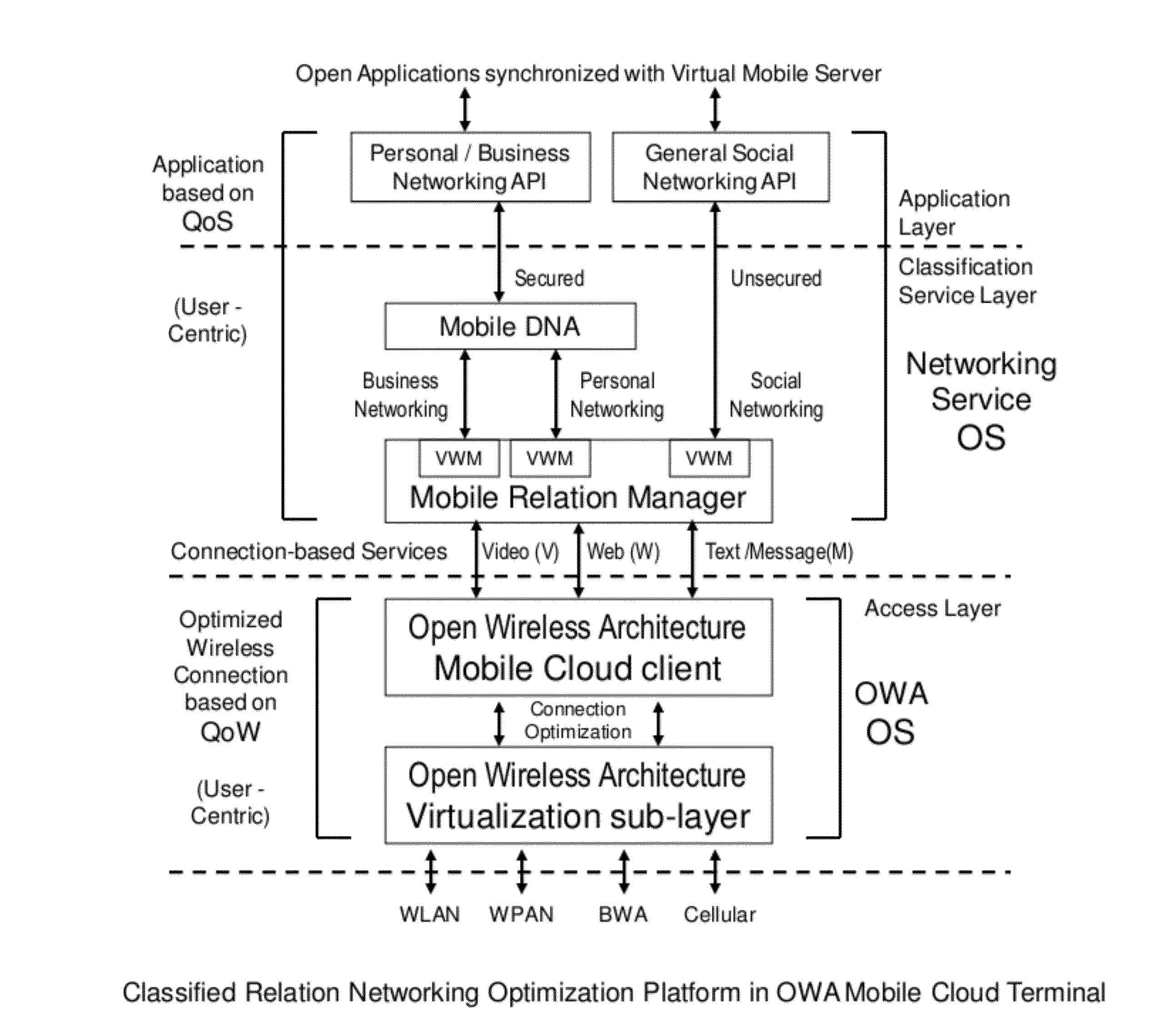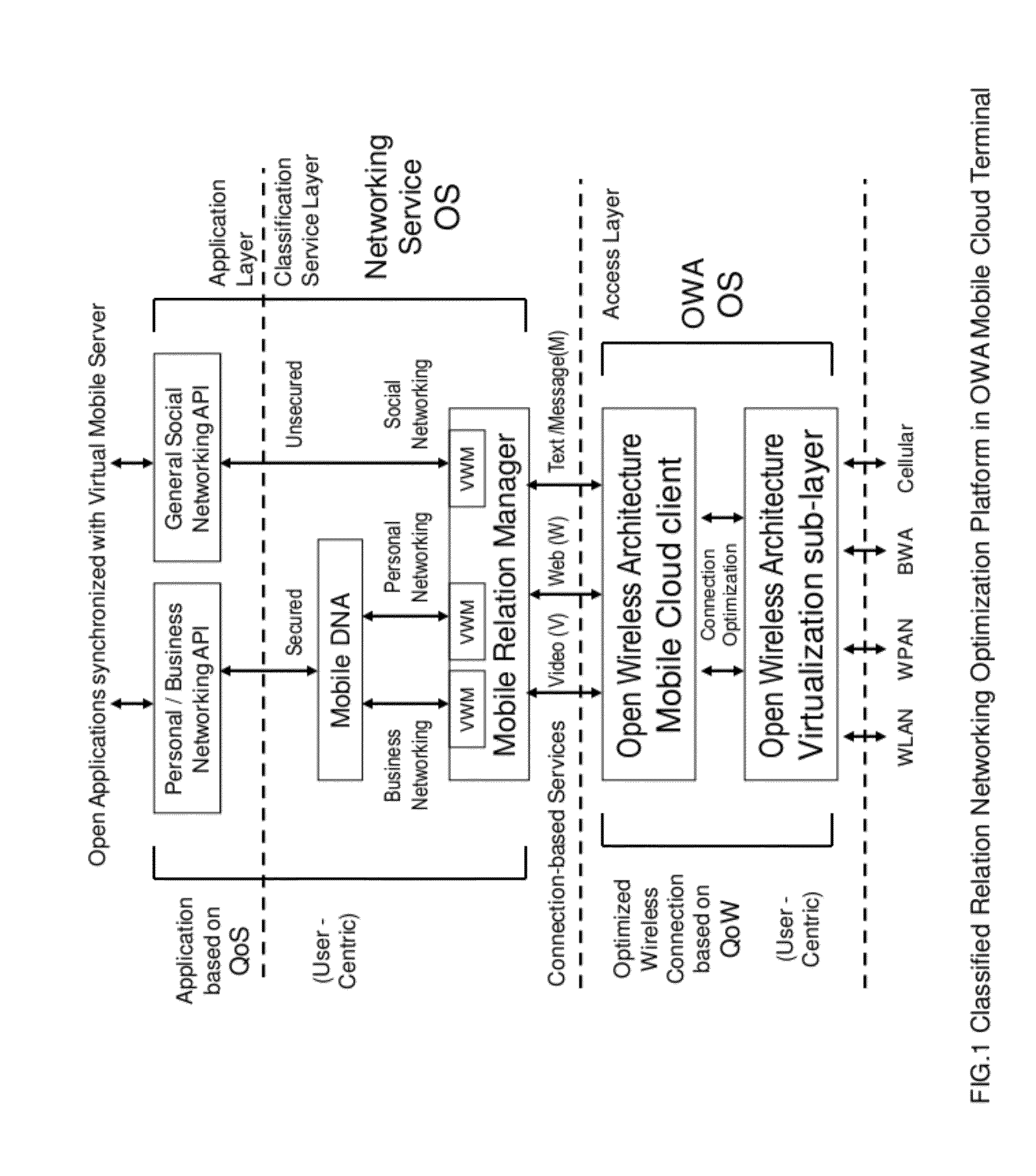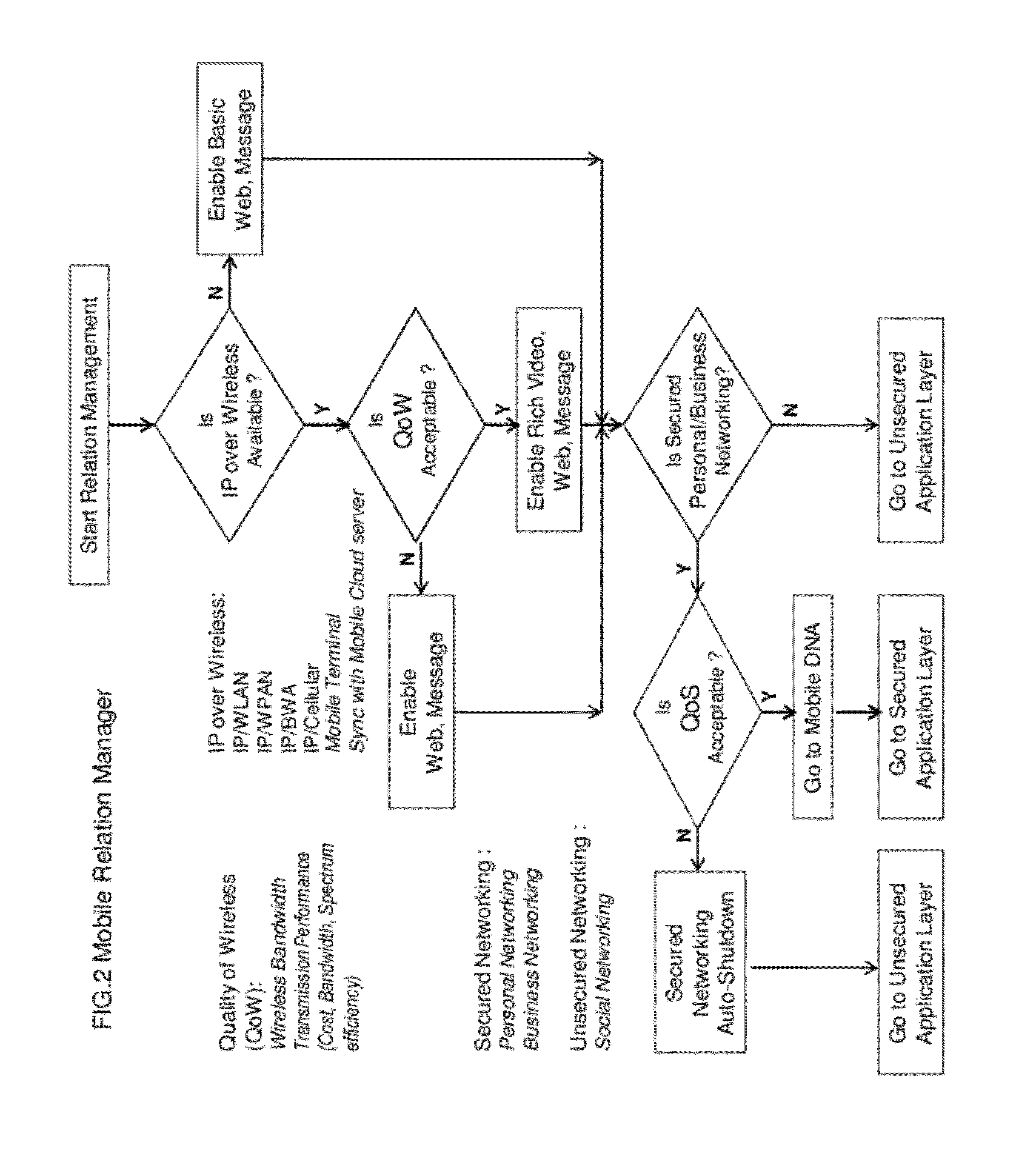Conventional social networking is limited to the desktop or
laptop through
wireline networks.
However, when evolving from
wireline networks to wireless mobile networks, lots of technical issues emerge to the performance of the social networking platform.
These critical technical issues include:1.
Wireline's
transmission bandwidth is basically unlimited in some extend, but
wireless bandwidth is both very expensive and technically very limited;2.
Wireline's social networking services are unlimited from
text message to web to video because no limitation in bandwidth, but wireless services are fully limited and impossible to have full services anytime and in any environment;3. Mobile terminal is in fast
fading propagation environment and wireless mobile bandwidth is unstable when users move to different areas which cause the
service quality changing frequently.
Therefore, mobile services are very much depending on the underlying wireless connections in different service areas and different
wireless transmission technologies;4.
Wireless connections are much unsecured in general compared to wireline networks, and some social networking information such as personal and business information is very critical for the users, hence extra efforts must be taken to ensure security measures for mobile users' services in the mobile relation networking business.
All of the current and conventional social networking platforms including Facebook, Google+, LinkedIn, Myspace, Youtube, Twitter, etc are not optimized for mobile devices of mobile users because of the aforementioned reasons and problems.
Furthermore, the conventional social networking does not optimize the networking services based on the networking bandwidth because the wireline networking has no much limitation in networking bandwidth and the networking environment is very stable in the wireline networking.
However in wireless mobile networking, the mobile terminal devices of mobile users are in frequent radio
fading environment with seamless mobility, the
wireless transmission bandwidth is therefore not guaranteed and subject to frequent change which leads to the unstable features of the social and relation networking services of the mobile users.
Though the conventional social networking platforms, such as Facebook, Google, LinkedIn, Twitter, etc, can support mobile devices of mobile users, both the connection and service efficiencies are very low, and the performance is very poor.
Furthermore, these conventional social networking platforms do not have secured networking measures for the mobile devices, and so mobile users' social networking information has been widely leaked to and accessed by unauthorized third-parties throughout the wireless social networking platforms (especially the unsecured link between the
mobile device and the social networking
server).
This is definitely not acceptable for some important and confidential business and personal networking information in the mobile relation networking.
Hence, conventional social networking platforms (Facebook, Google, LinkedIn, Apple
App Store, etc) do not have such security measures in the
mobile wireless transmissions, especially for the future converged multiple air interfaces environment.
As more and more mobile users utilize social networking services in mobile terminal devices, the aforementioned issues have emerged to be the critical problems in the industry, business,
community as well as society.
Therefore, the performance and security of mobile relation networking platform is mostly limited by and dependent upon the underlying wireless connections and transmissions.
But when we look back at the wireless mobile communication history, two major issues remain unsolved:1. The
mobile wireless terminal architecture is too closed.2. The mobile wireless
terminal system is too complicated.3. The mobile wireless services are too carrier-centric, not user-centric.
A unified global standard of mobile communications becomes extremely difficult and almost impossible.
In other words, SDR consumes much more power and spectrum in exchange of the
system flexibility.
From the business point of view, SDR is not a cost-
effective solution in wireless communications.
Furthermore, SDR uses
broadband transceiver to support multiple wireless standards which is very expensive in the commercial environment.
 Login to View More
Login to View More  Login to View More
Login to View More 


